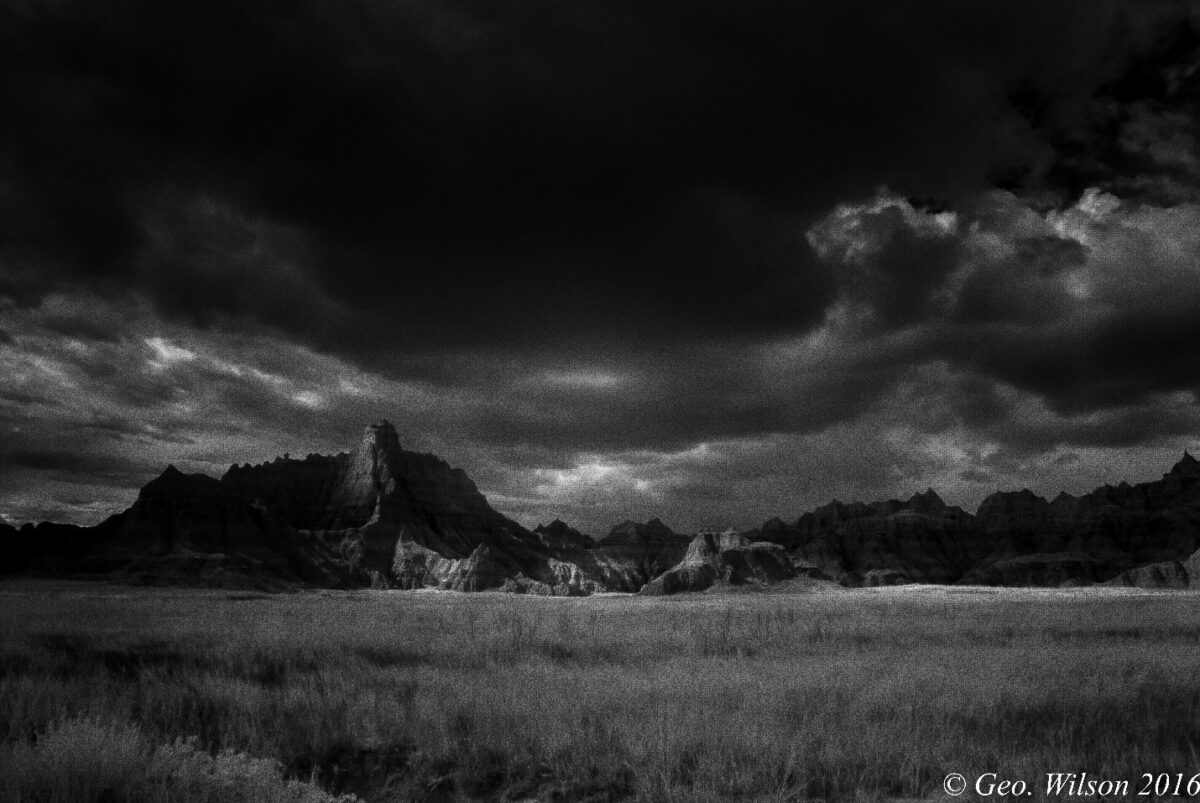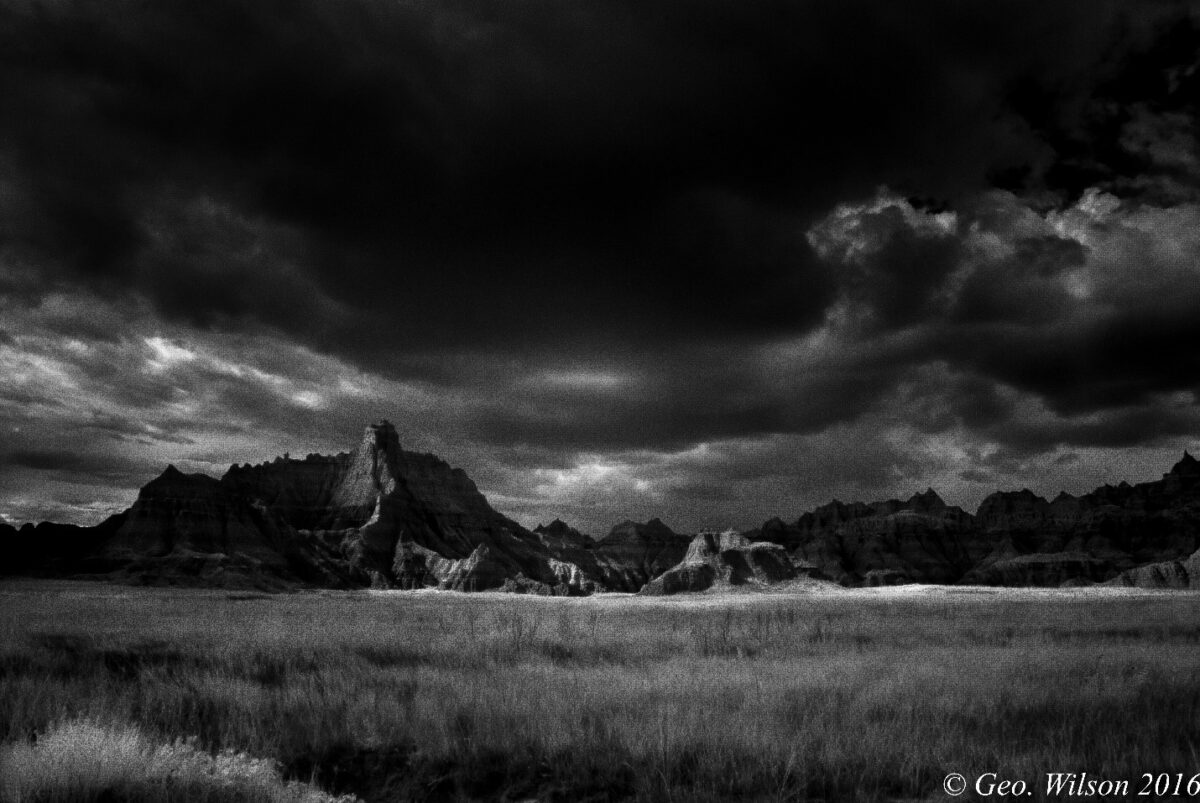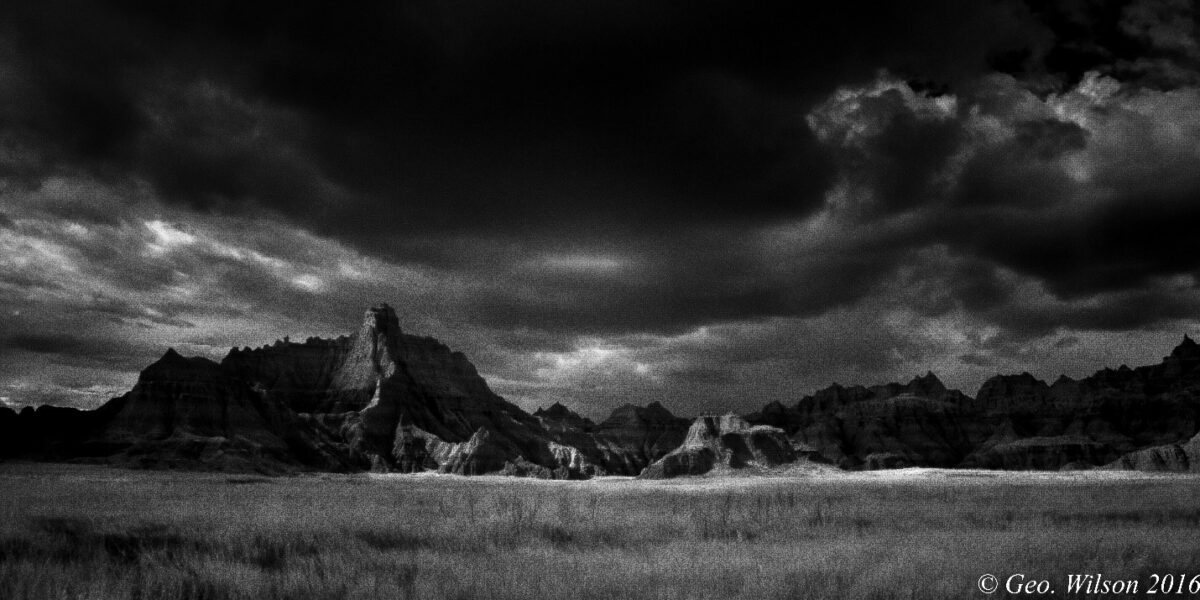Patience is a virtue – or so I was told growing up. So, what is the obsession with rushing through our photography– just to upload it to Instagram, Facebook, Flickr in hopes of getting lots of “likes” and favorites”? Will they really matter 100 years from now? What portion of our work will still exist when we pass on? Harsh to think about, yes, but it is reality. What do you wish to be remembered for at the end of your own life? Do you want to be remembered for a bunch of mediocre photos that had tons of favorites on social media? Or do you want a solid body of work that will be remembered and cherished for generations to come? I choose the latter.
With the use of digital photography and the post processing done today it seems that patience as a photography term is washed up of sorts. Post processing and HDR have allowed us now to gravitate from the mantra of Ansel Adams “You do not take a picture, you make a photograph” to a philosophy using post processing wizardry to create the image. What justice are we doing our viewers? If a landscape scene does not exist as it is in the photograph, what incentive is there for someone to want to visit the location, become passionate about it or involved with it – to maybe try and help to protect an endangered parcel of land or watershed, a species of animal or maybe a historic structure close to your home? Do we owe it to our work and ourselves to spend more than just a few minutes at a location?
In my advanced class of photography students their first assignment is to make a landscape photograph. Before they can bring out the camera, they must spend a minimum of 30 minutes walking through the area answering the following questions: What do you feel- is it cold or warm, is there a wind? Close your eyes and now, what do you hear – the wind, water rushing through rapids, birds? With your eyes still closed – what do you smell? Do this several times and write the answers down! Now, answers in hand, how do we build a photograph? How do we translate the thoughts and emotions inside you combined with the tactile things you could feel into visual communication? – How can we capture it in the camera? – How do we deliver this same experience, or close to it, to your viewer? Doing this repeatedly over time, the photographer starts to build the patience required for crafting an image.
Digital Photography is a tremendous advancement, but I am a believer that it has generated the “I got it syndrome” among photographers today. I, myself, like the instant results after pressing the shutter release. But I see a tendency for people to think they “have” it after a quick glance before hopping back in the car having never set foot off the road and moving on to another photographic subject. In the film days, when we couldn’t see the pictures until I had “souped” the film and put it on a light table – yes, I am that old. I had incentive to stay with a subject and work a situation harder. I did not have the advantage of computers – just an enlarger, chemicals and, oh yeah, patience to coax the image out of the paper. The devotion to patience led to the capture of a lot of moments that would have otherwise gone unrecorded. If something makes you stop and take out your camera, then it is certainly worth spending some time on. As your scene changes, your knowledge of it and approach will change too—the more time you spend with it, the better you will understand it.
On this September afternoon, I had entered Badlands National Park in South Dakota from the West and was driving eastward. As a storm gathered in the southwest, I was able to watch its movement as it tracked on an ENE/NE path. I pulled out my topographical map – yes, they still make them and yes, I have not fully accepted GPS – I used my dead reckoning skills from my time as a youth sailing the New England waters and determined the approximate path. I had marked Vulture Peak on the map previously and that was where it would hopefully track based on what I had determined. It was about a 30-mile drive for me now.
Following the park road through the peaks, valleys and open prairies, I managed to arrive at the ranger station opposite the peak with ample time. Crossing the street and getting into a field I went through my exercise. What do I feel- it was cold with a slight wind. Close my eyes and now what do I hear – the wind and the movement of the grass. With my eyes still closed – what do I smell – in this case, I could smell sage. I had the elements I needed – the approaching storm. I would underexpose slightly for a darker and colder image. The grass and a little bit of sage would be kept in the image. I just had to wait out the storm now as it moved towards me.
I was using a camera converted to infrared – 720nm was the strength. With this wavelength, I can still use filters and get results. I also have an 850nm converted camera. At this wavelength, filters do not have and affect on the resulting image.
I chose to use a Galen Rowell 2 stop Split Neutral Density filter. I knew from trial and error that this filter would darken the selected area of the image only about 2/3 of a stop due to the infrared wavelength of the camera conversion -720nm. With the sky significantly darker than the foreground, I chose to place the darkened area at the image bottom. This allowed the sky to be unchanged.
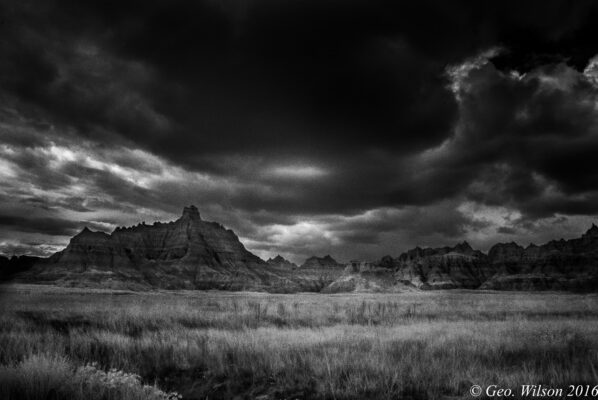
In the image above, the storm has gotten fairly close, darkening Vulture Peak on the left, but giving a little bit of sunlight on the peaks in the background. I had been here at the location for almost an hour watching the storm approach before I shot this image.
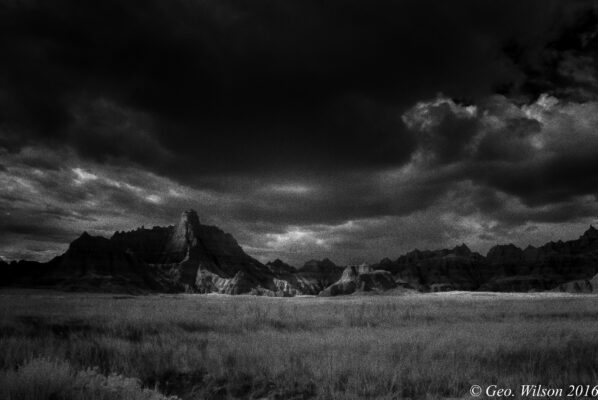
In this image (2 minutes after the first), clouds have opened up slightly on Vulture Peak, but have provided too much light on the foreground. Light was now changing fast and I could see it moving among the peaks.
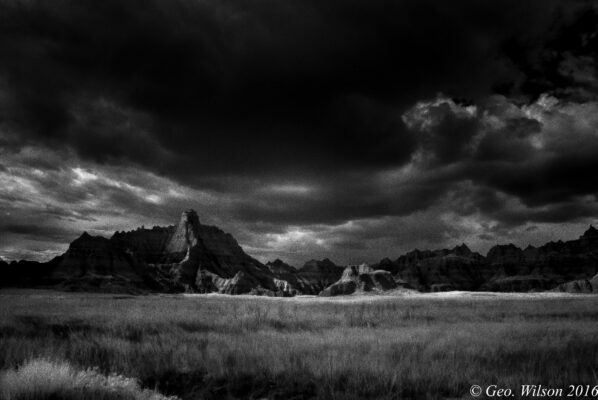
In my final image – just about 30 seconds after the previous – the broad light has shifted and been restricted by the clouds above creating a shaft of light coming down on the foreground, while highlighting Vulture Peak. This is what I had hoped for.
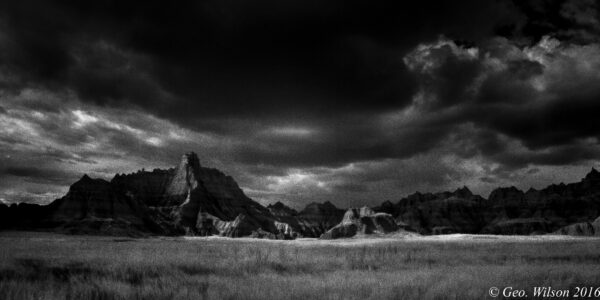
Lastly, in post processing I chose a 2:1 crop ratio, which give a little stronger impact to the image.
A strong body of work generally takes 5–10 years to develop. Of course with any artistic endeavor, it can take longer or even shorter. Some bodies of work are in a continual state of evolution, but I find that 5-10 years is average for strong body of work. My Central Florida Landscape body of work was started in 2008 – 11 years ago. I have 75 very good images in it. That means over the last 11 years, I have gotten a “worthwhile” image once every 7 1/2 weeks. It is actually much longer as I once got three images in one day. Eleven years have passed quickly, and I have stayed with my project because I love living in Florida. The swamps, hammocks and grasslands are in stark contrast to the theme parks and crowded beaches we are known for. My goal is to educate people about what is here – the beauty of Florida and the world around us. Patience in my photographs has helped me stay the course and more importantly lead to some wonderful images.

